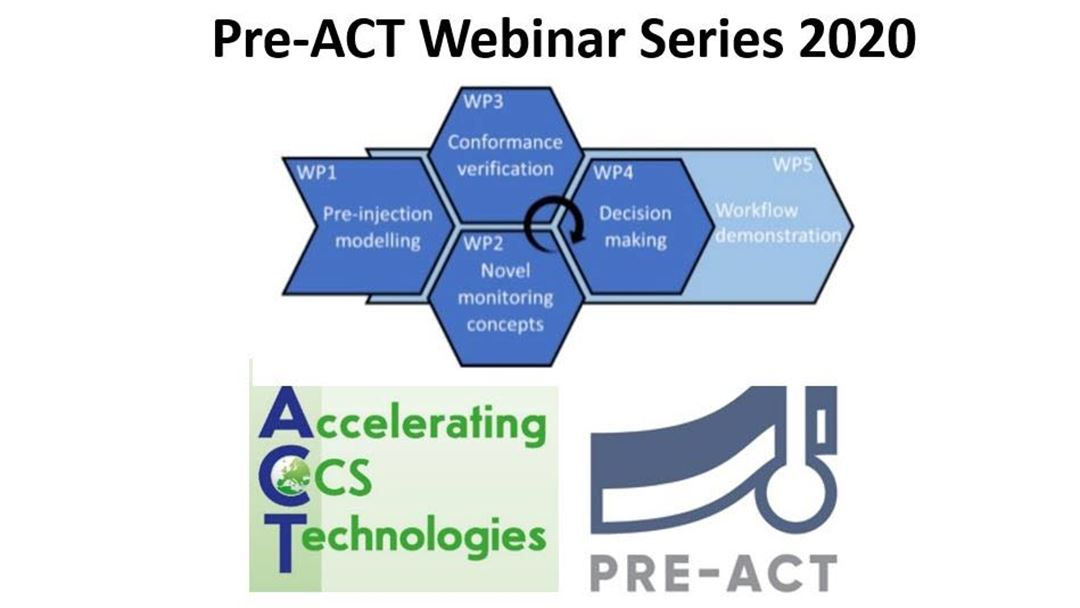Title:
Part 1: Pressure propagation and saturation changes in reservoirs displaying geological heterogeneity
Part 2: Acoustic emission testing – investigation of the footprint of a pressure plume
PRESENTER(S):
Hayley Vosper, Research Scientist, BGS
Pierre Cerasi, Senior Scientist, SINTEF
DATE: March 24, 2020
TIME: 10:00 – 11:00 AM (CET)
DURATION: 1.0 hrs incl. Q&A
Description/purpose
The ERA-ACT funded Pre-ACT project presents findings from its Work Package 1, focusing on understanding the consequences of pressure changes in the reservoir during geological CO2 storage.
This presentation will have a dual focus, exploring the problem at two different scales. Hayley Vosper (Research Scientist, BGS) will initially present an overview of geological heterogeneity in CO2 storage. This will highlight the role heterogeneity has played at European CO2 storage sites. Then, using of a suite of generic reservoir models, Hayley will develop a set of guidelines for effective pressure management and control. The geological realisations have been built to incorporate heterogeneity at a range of length scales, and the pressure and saturation changes observed in the models are dictated by the structure. This modelling exercise illustrates crucial concepts that require consideration before injecting into heterogeneous reservoirs. Additionally, the work provides examples that can be used in stakeholder knowledge building when evaluating large-scale CO2 storage plans.
Pierre Cerasi (Senior Scientist, SINTEF) will then present results from a series of acoustic emission experiments conducted at the NGI laboratories in Oslo. In these tests, the risk of reactivation of a critically oriented fault by the passage of a pressure front ahead of an injected CO2 plume is investigated. A stress-induced fracture in an outcrop sandstone plug simulates the fault. Reactivation is obtained by sending a pore pressure pulse through the plug. Acoustic emission is monitored throughout the test, with localisation and moment tensor inversion analyses shedding light on the micro-fracture mechanisms responsible for energy emission during the different stages of the experiment.
The findings from these studies are fundamental to the pressure driven conformance protocols developed in the Pre-ACT project and presented in future webinars.
About the Pre-ACT Webinars
· To access the webinar, you must register via the link above. By registering you will receive a unique link that you use to enter the webinar.
· The webinar will be open 5 minutes prior to start.
· Interested, but can't attend? Register anyway, and we'll send you a link to the recording.
Best regards,
The Pre-ACT Team
Questions? Contact:

